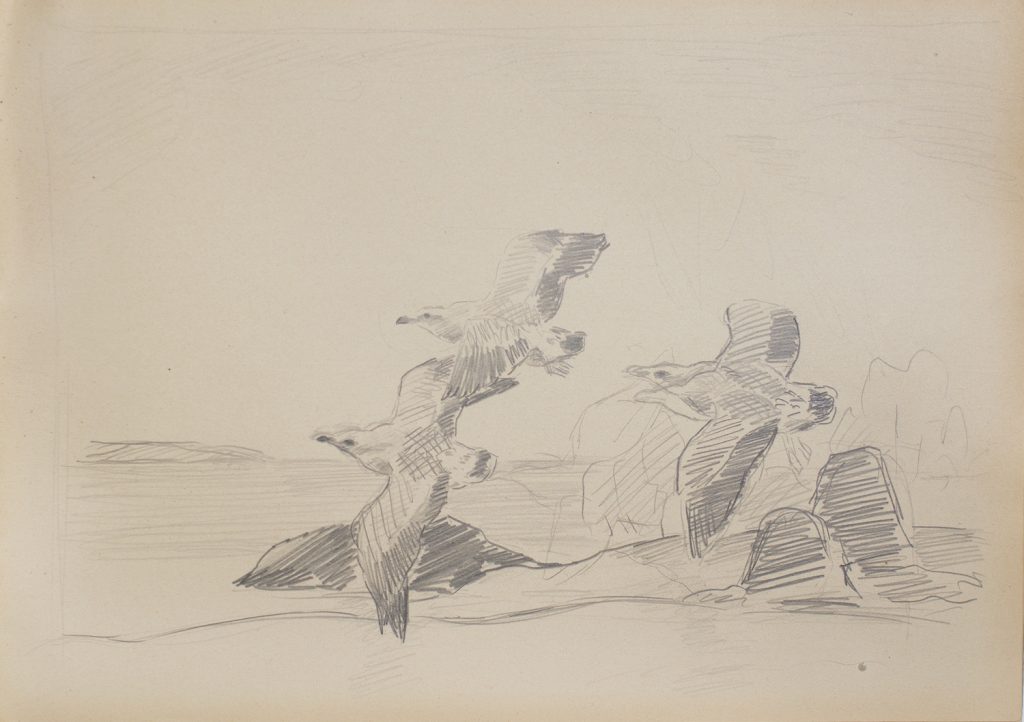Segerstråle’s Bird motifs
While Professor Segerstråle (1892–1975) is best known for his monumental works – both secular and ecclesiastical – he was also an esteemed graphic artist with a long career behind him. In his gravure printing graphics, he often depicted animals, especially birds.
In 2000, Gösta Serlachius Fine Arts Foundation acquired the Segerstråle estate, which consisted of over 6,000 works or partial works, including aquarelles and oil paintings, sketches for monumental works, nearly all of the artist’s graphics proofs, some 50 sketch books, and hundreds of separate sketches.
The artist’s sketchbooks feature several sketches and studies of birds. They include seagulls flying in the wind and baby seagulls on the cliffs, with their big feet, as yet unable to fly, their feathers ruffled. Segerstråle also liked to depict divers, cranes, geese, goldeneyes and, in his later years, noble eagles, hunting falcons, owls and bullfinches.
Segerstråle spent many of his summers by the seaside, often at his family’s summer residence in Pellinki. He is said to have ‘conversed’ with birds even when he was a little boy. Like nature photographers, he made his way to woods and skerries to photograph and sketch birds and their movements. His first works of art were paintings of birds.
The young man learned about the anatomy of birds, what kind of plumage males and females wear in each season, how birds move, and what kind of behaviour is typical of each species. His objective was to portray everything correctly, just as things are in nature.
As a young man, Segerstråle also shot birds and learned to stuff them. This was in common with the early Finnish bird painters whom he admired, the von Wright brothers. Another of his artistic role models was Bruno Liljefors (1860–1939) from Sweden. He was a respected painter of hares and swans. Segerstråle travelled to Stockholm to get his advice on painting birds. Even when the future artist was studying forestry at the University of Helsinki, he did not abandon art; he took drawing classes from Eero Järnefelt (1964–1937) in the university’s drawing hall.
In his later years, Segerstråle changed his approach from the natural style he had adapted when young to modernism. Icarus who burned his wings flying too close to the sun replaced the wedges of cranes, swans and geese flying through the skies. Subsequently also angels and birds of paradise emerge in his monumental works of an ecclesiastical nature.
Marjo-Riitta Simpanen
Curator and art historian


